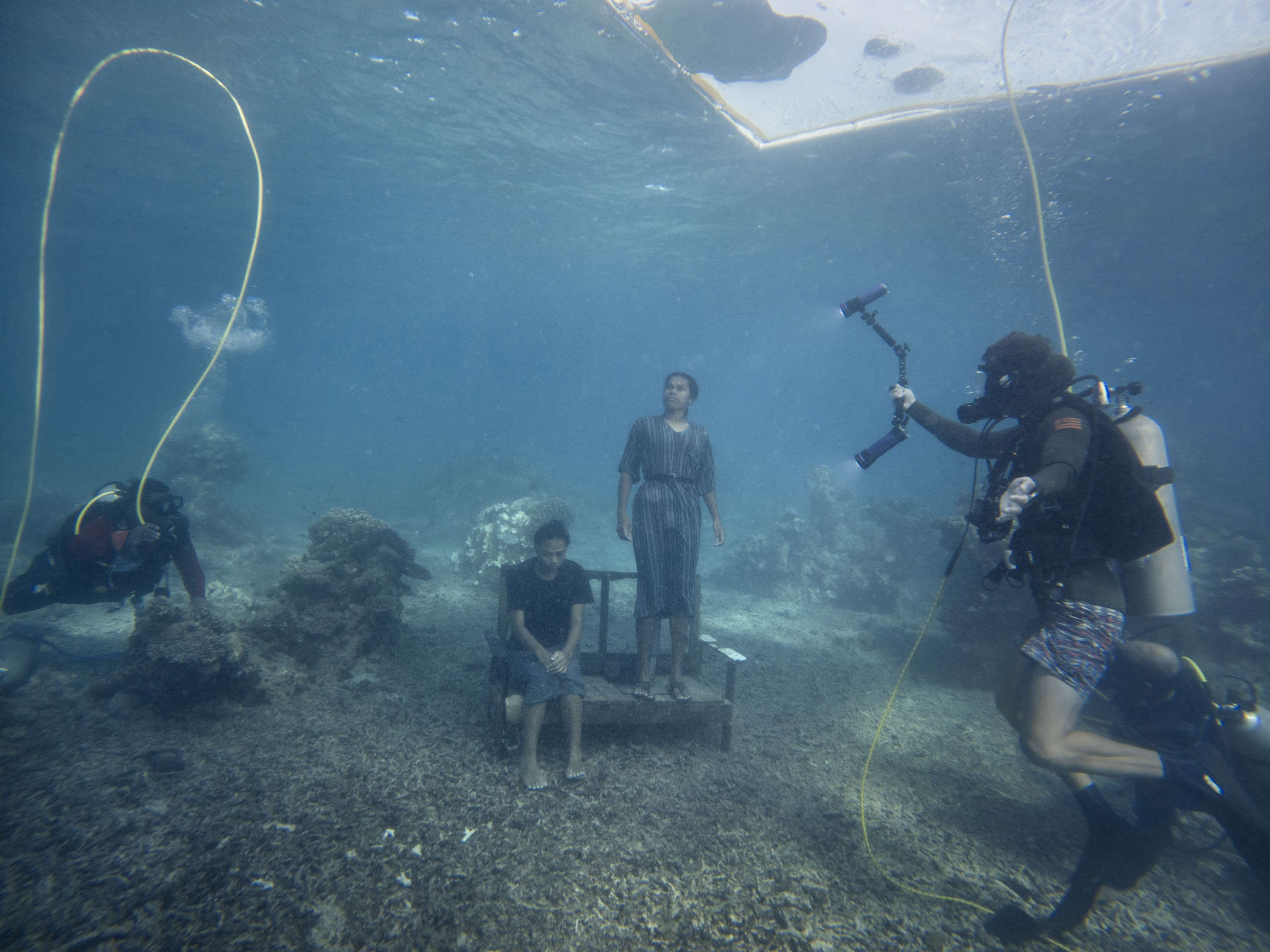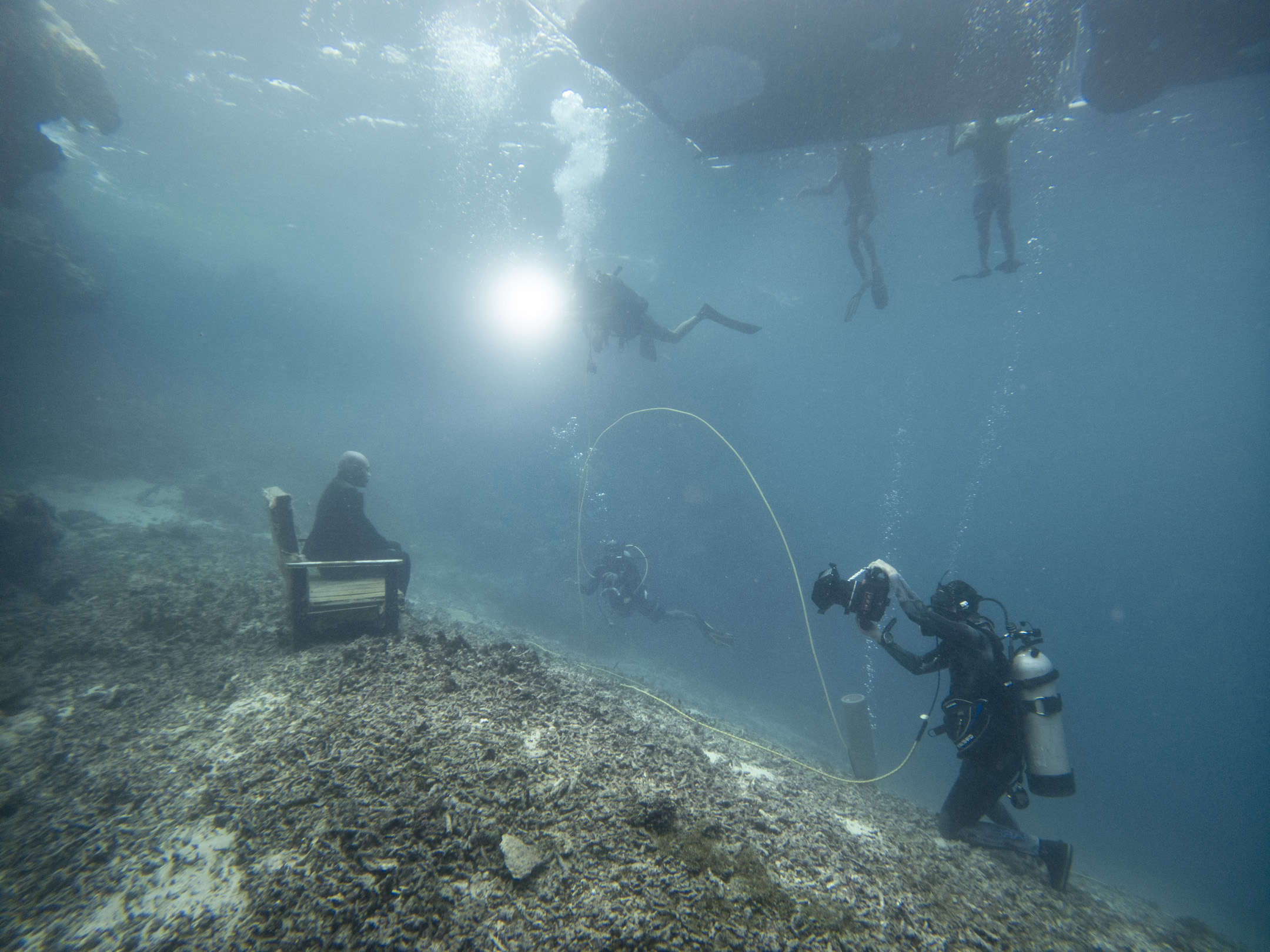But then we came across the ‘cliff’ location, completely different to the shallow coral fields of the Boneyard. These photos turned out to be some of my favorites. So had I not been forced out of desperation to look for another location, these photos would never have existed. Like I said, I love how often something good comes out of what seems a huge problem.
The six weeks in Savusavu were mostly a wonderful experience, mainly made possible by the Fijian cast and crew. The list of credits is on the Thank You page (page 11x), but one note here, something that especially touched me :
On how many shoots and in how many places in the world would the cast, when no longer needed, voluntarily help the crew? We experienced this for Chapter Two of The Day May Break in Bolivia, with some of the wonderful people that I photographed there. But here, the cast went further. Young and older, after I had finished photographing them, they would invariably jump back in the ocean to enthusiastically help out. They held the fabric frames over our heads in place on the surface for long periods, and they free dived down from the boat to us with urgently needed extra weights and equipment (Fijian Underwater Couriers). Long may they continue their lives with such joy.



